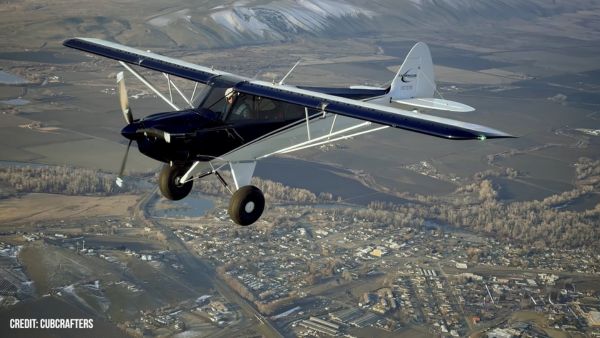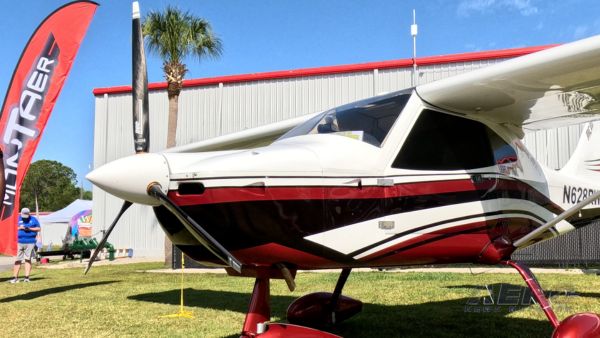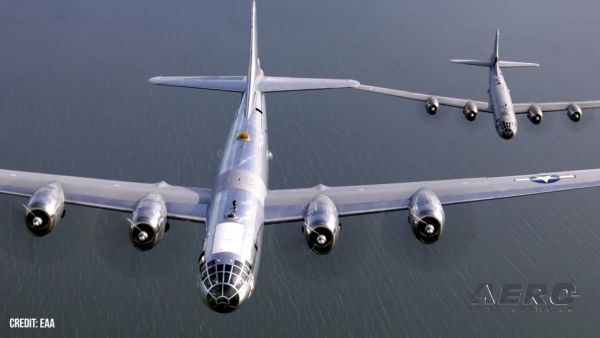Revolutionary Boeing Canard Rotor/Wing Aircraft Begins Flight
Testing
Nearly 100 years after
the dawn of powered flight, a new generation of high-speed,
unmanned air vehicle successfully has began flight testing. The
Boeing Company’s Canard Rotor/Wing (CRW) concept demonstrator
completed its first hover flight at the U.S. Army Proving Ground in
Yuma, Ariz.
During the flight test, the CRW advanced technology demonstrator
– known as the X-50A Dragonfly – flew for about 80
seconds at 8:10 a.m. MST, December 3rd, 2003. It lifted off
vertically from the launch site to an altitude of 12 feet above the
ground, hovered and then vertically landed, commencing the flight
test program.
Under joint development by Boeing and DARPA (Defense Advanced
Research Projects Agency), the CRW is a revolutionary aircraft that
combines the speed and range of a fixed-wing aircraft with the
flexibility of rotary-wing flight. This is because the CRW’s
rotor is designed not only to spin during vertical takeoffs and
landings but also to stop turning during flight and convert to a
fixed wing for high-speed cruise.
“Today’s successful hover flight was an exciting
first step toward meeting the goal of this flight test
program,” said Gary Gallagher, CRW Systems senior manager for
the Boeing Phantom Works advanced research and development unit.
“The ultimate objective is demonstrating the
Dragonfly’s ability to convert from rotary-wing to fixed-wing
and back to rotary-wing flight.”
About a dozen flight tests are scheduled for the X-50A
Dragonfly. Under the remote control of a pilot in the ground
station cockpit, the vehicle will gradually perform more extensive
hover flights, then forward moving rotary-wing flights, and finally
a conversion to a fixed-wing flight and back again to a rotary-wing
landing. Two such conversion flights are planned.
The X-50A Dragonfly vehicle is 17.7 feet long and 6.5 feet high
and weighs 1,460 pounds. In addition to its 12-foot-diameter
rotor/wing, it also has an 8.9-foot-span canard and an
8.1-foot-span horizontal tail. It is propelled by a conventional
turbofan engine combined with The Boeing Company’s unique
reaction drive rotor system.
During rotary-wing flight, the engine’s exhaust is
diverted by the reaction drive system through the rotor system to
exit through small nozzles in the rotor tips. As forward speed
increases and the canard and tail pick up the aerodynamic load of
the aircraft, the exhaust is gradually diverted completely through
a nozzle at the back of the aircraft, propelling it even faster
forward and allowing the rotor to stop and lock into place for
fixed-wing flight. The reverse then occurs for conversion back to
rotary-wing flight.
Gallagher explained that the CRW reaction drive rotor system
eliminates the need for the traditional mechanical transmission,
drive train and anti-torque device. “Reaction drive makes the
CRW much lighter, simpler and more affordable to operate and
support than traditional rotorcraft.” Its greater speed,
range and flight-mode flexibility will make it suitable for a wider
range of missions.
Further expanding CRW’s flexibility and versatility is the
fact that it can be scaled for both manned and unmanned
applications. As an unmanned air vehicle, the CRW would be able to
perform such missions as reconnaissance, communications and data
relay. In a manned configuration, it would be ideal for armed
escort, command and control, logistics re-supply and medical
evacuation.
“The CRW is truly a transformational aircraft for the 21st
century,” Gallagher said. “Boeing is proud to be
working with DARPA to bring our war fighters this exceptional new
capability.”
The CRW is being developed by the Boeing Phantom Works, which is
the advanced R&D unit and catalyst of innovation for the Boeing
enterprise. By working with the company's business units, it
provides advanced solutions and innovative, breakthrough
technologies that reduce cycle time and cost while improving the
quality and performance of aerospace products and services.
Phantom Works and DARPA have been developing the CRW concept
under a 50-50 cost share agreement since May 1998.
 ANN's Daily Aero-Linx (04.15.24)
ANN's Daily Aero-Linx (04.15.24) Classic Aero-TV: 'No Other Options' -- The Israeli Air Force's Danny Shapira
Classic Aero-TV: 'No Other Options' -- The Israeli Air Force's Danny Shapira Aero-News: Quote of the Day (04.15.24)
Aero-News: Quote of the Day (04.15.24) Airborne 04.16.24: RV Update, Affordable Flying Expo, Diamond Lil
Airborne 04.16.24: RV Update, Affordable Flying Expo, Diamond Lil ANN's Daily Aero-Term (04.16.24): Chart Supplement US
ANN's Daily Aero-Term (04.16.24): Chart Supplement US


